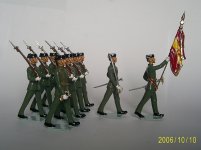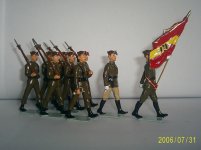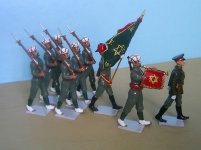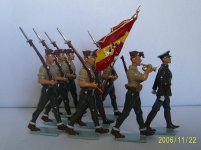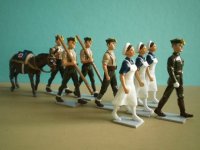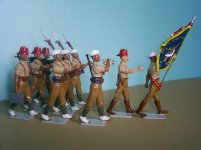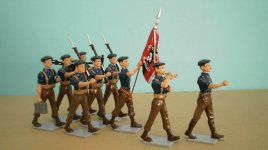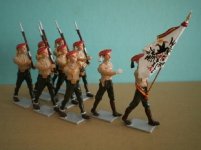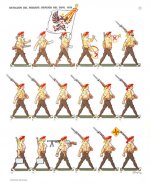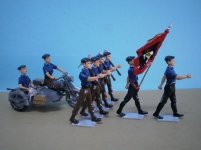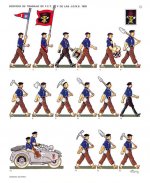ucla1967
Major
- Joined
- Jan 28, 2006
- Messages
- 6,752
Hi Mike,
Thank you for the prompt reply. It is always refreshing to hear someone admit to liking Austo-Hungarian Toy Soldiers; there are not many of us about!
The six sets to which I referred are: 1. Hungarian Crown Guards, 2. Hungarian Trabarten Guards, 3. Leibgarde Infantry Company, 4. Landesschutzen, 5. Jaegers, 6. Bosnian Jaegers. The first 3 Guards sets are very rare. I had to talk long and hard to Andrew to get him to make me 2 sets of each, a few years ago. The intention was that I would have one set and one of my small circle of discerning Collectors of A-H figures would have the other. Unfortunately, my mate Ken passed away before the figures arrived. So, that is how I have a "spare" set.
It is true that I haven't produced anything in a long time, but that doesn't mean that I can't be "induced" into returning to limited production.
You may wish to discuss these issues further, off line.
Regards,
Bob
Hi Bob,
You are right about there being a small fraternity of collectors who like Austro-Hungarians. My good friend, Bob Walker, has a large number of figures in his collection, many of which he cast and painted himself. He is coming over to my house this afternoon and I will see if he may be interested in taking you up on your offer.
Those Bastion guards set you mentioned are new to me and I can see why. I would be interested in discussing with you the possibility of buying your spare sets. My direct email address is matara42@roadrunner.com. The Bastion Austro-Hungarian sets that I am aware of are A.21 Austrian Infantry 1914, A.48 Bosnian Infantry, A.53 Austrian Infantry in action, A.61 Jaegers, A.62 59th German Regiment, A.63 85th Hungarian Regiment, A.64 Austrian Mountain Troops, and B.7 Austro-Hungarian Sailors 1900.
Regards,
Mike


